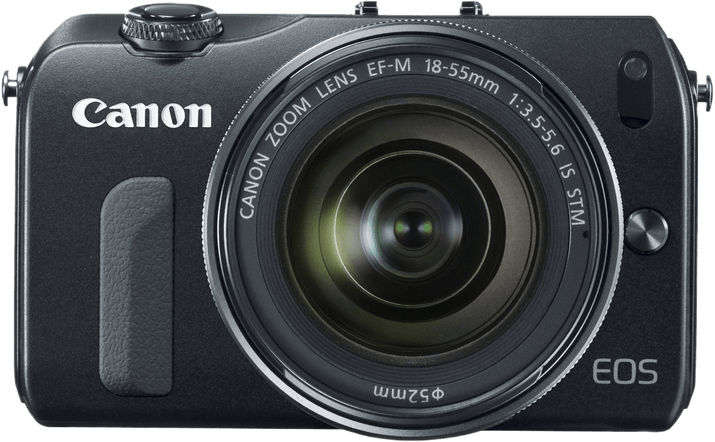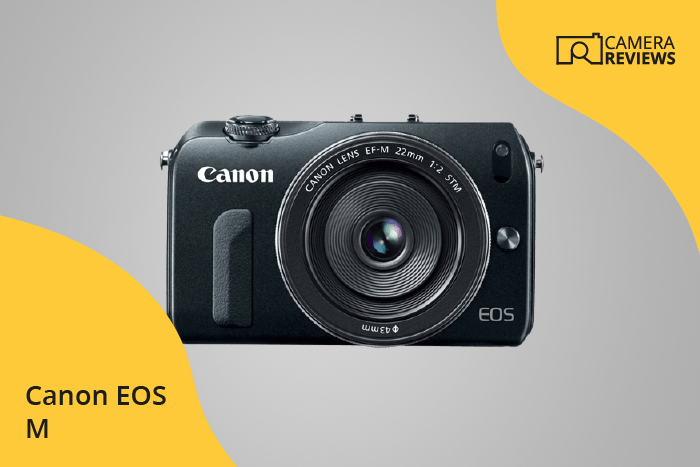Canon EOS M Specs and Scores

The Canon EOS M scores 44/100 in our evaluation. Announced on July 23, 2012, this mirrorless camera was initially priced at $799. Measuring 109 x 66 x 32mm and weighing 298g (0.66lbs), it offers compactness and portability. However, considering the advancements in camera technology since 2012, the EOS M faces tough competition in today’s market. While its specifications were once impressive, modern cameras offer more advanced features, making the Canon EOS M less appealing to current consumers.
Canon EOS M Overview and Optics
The optics of the Canon EOS M receive a score of 42/100. This camera features 18 megapixels, a shooting speed of 4.3, a CMOS sensor, and a Digic 5 processor. The DXOMARK score for the sensor is 65, and the sensor size is APS-C. The lens mount is Canon EF-M, and there is no image stabilization. The aspect ratio is 3:2.
In the current market, these specifications are modest. Many cameras now offer more megapixels, faster shooting speeds, and better sensors. The lack of image stabilization is a drawback for those seeking sharp images in low-light conditions or while using longer focal lengths.
The Canon EOS M’s optics are not impressive compared to newer models. Its modest specifications may suit beginners or casual photographers, but professionals and enthusiasts might find it lacking in performance and features.
Canon EOS M Video Performance
The Canon EOS M receives a video score of 43/100. This camera offers Full HD video resolution with maximum dimensions of 1920 x 1080 pixels. The highest video frame rate available is 30fps, which is decent for casual video recording but may not be sufficient for professional videographers or fast-paced action scenes. Additionally, the EOS M lacks built-in time-lapse functionality, which is a feature often sought after by creative video enthusiasts.
Compared to other cameras in the market, the Canon EOS M’s video capabilities fall short. Many current cameras offer 4K video resolution and higher frame rates, resulting in smoother and more detailed footage. The absence of time-lapse functionality further limits the EOS M’s versatility in the video department.
The Canon EOS M may not be the ideal choice for those seeking advanced video capabilities. While its video features are adequate for basic recording, those looking for more advanced options should consider alternative camera models.
Canon EOS M Features and Benefits
The Canon EOS M receives a feature score of 57 out of 100. The camera is equipped with a 3-inch screen, offering a resolution of 1,040,000 dots. Users can enjoy the convenience of its touchscreen capabilities, but the screen is not a flip screen. The camera lacks GPS, WIFI, and Bluetooth connectivity.
Examining the features in the context of today’s market, the EOS M falls short when compared to other cameras that offer more advanced technology. The absence of a flip screen, GPS, WIFI, and Bluetooth are significant drawbacks for photographers who seek a more versatile and connected experience.
Therefore, while the Canon EOS M may be suitable for certain photography needs, its features do not make it a top choice for those seeking advanced capabilities and connectivity options in a camera.
Canon EOS M Storage and Battery
The storage and battery score for the Canon EOS M is 13/100. This camera offers one memory card slot, which accepts SD, SDHC, and SDXC cards. In the current market, having only one card slot may be limiting for some users. The battery life of the EOS M is 230 shots, powered by an LP-E12 battery. This battery life may not be sufficient for extended shoots or all-day photography sessions. Additionally, the camera lacks USB charging capabilities, which further hinders its convenience and usability.
The Canon EOS M’s storage and battery specifications reveal certain limitations in today’s market. With a single memory card slot and a relatively short battery life, the camera may not provide the desired user experience for those seeking more advanced features and capabilities.
Canon EOS M Alternatives
Do you want to know how the Canon EOS M compares to its competitors? Have a look at the most popular comparisons for this camera below:
- Canon EOS M vs EOS Rebel T5i / 700D
- Canon EOS 90D vs EOS M
- Canon EOS 80D vs EOS M
- Canon EOS M vs EOS M50
- Canon EOS M vs EOS Rebel T8i / 850D
- Canon EOS 1D X Mark III vs EOS M
- Canon EOS M vs Panasonic Lumix DMC-GH4
Canon EOS M FAQ
Does the Canon EOS M Have Built-in Image Stabilization?
The Canon EOS M does not have built-in image stabilization. However, it can support lenses with optical image stabilization to help reduce camera shake and produce sharper images.
Does the Canon EOS M Support 4K Video Recording?
The Canon EOS M does not support 4K video recording. The maximum video resolution it offers is Full HD 1080p at 30 frames per second.
What Size Sensor Does The Canon EOS M Have?
The Canon EOS M is equipped with an APS-C sized sensor, which is a popular size for many entry-level and mid-range DSLR and mirrorless cameras.
Does the Canon EOS M Have a Dual Memory Card Slot?
The Canon EOS M features a single memory card slot, which supports SD, SDHC, and SDXC cards for storing photos and videos.
Does the Canon EOS M Have a Touch Screen?
Yes, the Canon EOS M features a touch-sensitive 3-inch LCD screen, which allows for easy navigation, image review, and focus point selection.
Does the Canon EOS M Have Wi-Fi and Bluetooth?
The Canon EOS M does not have built-in Wi-Fi or Bluetooth capabilities for wireless image transfer or remote camera control.
Does the Canon EOS M Have GPS?
The Canon EOS M does not have built-in GPS functionality for geotagging images or tracking camera locations.
Is the Canon EOS M Weather Sealed?
The Canon EOS M is not weather-sealed, so it is advisable to avoid using the camera in harsh weather conditions or protect it with a suitable cover.
Does the Canon EOS M Have a Built-in Flash?
The Canon EOS M does not have a built-in flash. However, it has a hot shoe mount to attach an external flash for additional lighting when needed.

